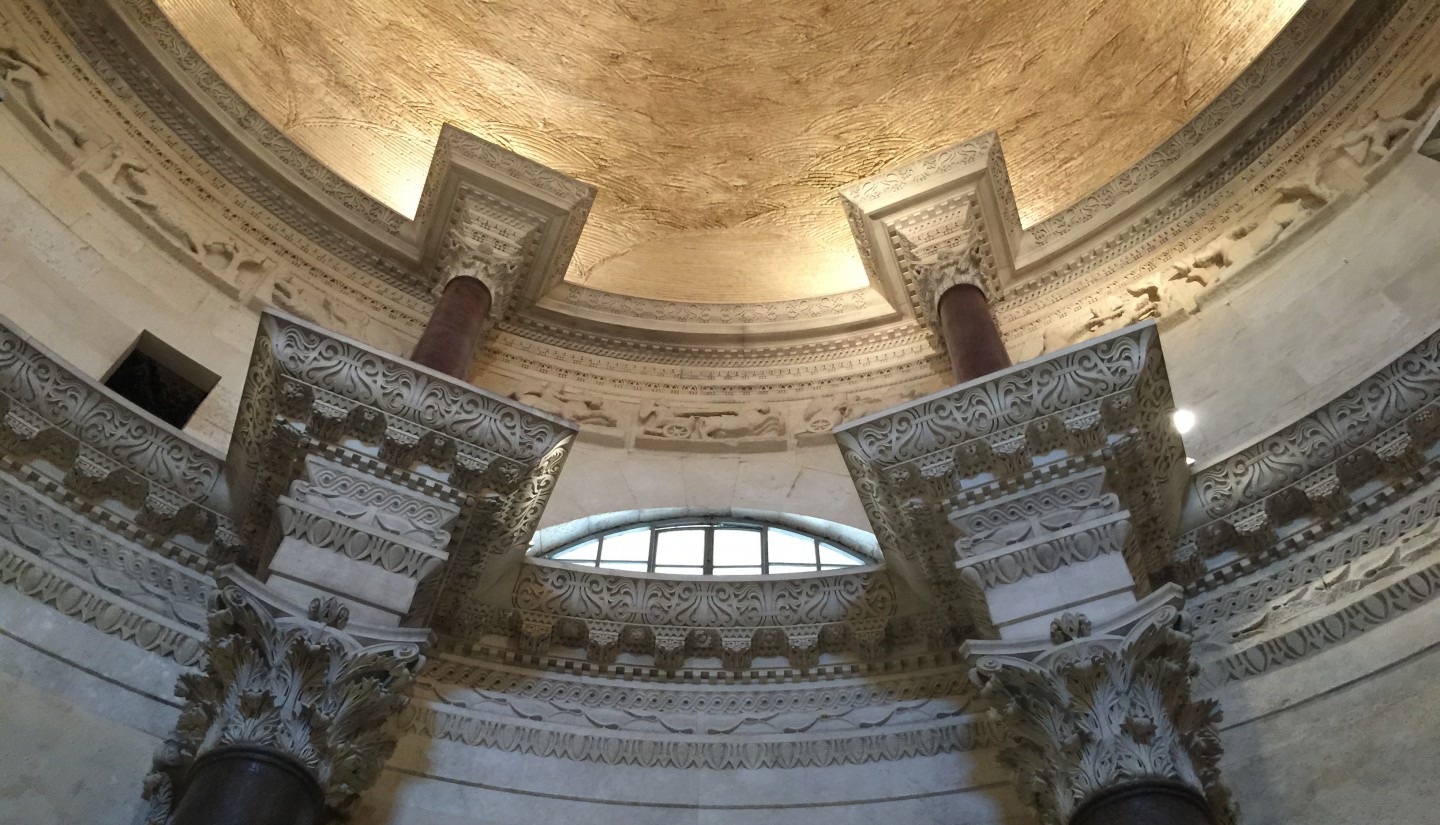Overall Impact: *** 3 stars – a nicely presented and well-maintained small town
Access ***** 5 stars – carpark next door, cycle, walking and Swiss buses
Atmosphere ** 2 stars – perfunctory pond for former lake-edge helps, as do the inventive Swiss visualisations
Other ** 2 stars – you can get a feel for what it would have been like

As excellent as it was unexpected, we stumbled across the Roman small town of Lousonna on a visit to Lausanne, Switzerland, last week.
If you walk, cycle or drive along the shore of Lake Geneva (Lacus Lemannus) westwards from the Chateau of Ouchy, in the direction of Geneva, in about 2km (just past the modern offices of IMD) you come to a well-signposted Site Romain. (Ouchy, by the way, is where Lord Byron wrote “The Prisoner of Chillon” in a comfortable lakeside cafe and where the Peace Treaty of Lausanne with Kemal Ataturk’s resurgent new state of Turkey was signed in 1923.)
There is an extensive car park at the site, for those enjoying the lake and its many leisure facilities. The site is open and generally well-cared for. Its reconstituted walls that will remind any of us who, as children, visited castles and abbeys across the UK of the well disciplined approach of the old Ministry of Public Building & Works!

The plan is clear and presumably simplified for display purposes to a single final phase: here we see Lousonna at the height of its prosperity in the C3rd. It is particularly helpful for understanding the site that the location of the former Roman waterfront of Lake Geneva has been recreated by a (slightly brackish) linear pond. There are several plans set up around the site showing the key buildings, which consist of a rather impressive but curiously one-sided Basilica with the Hall on the lake-side and rooms opening off it on the land-side only. The Basilica was 71m long by 19m wide with large pillars. It is dated by the excavators to AD40 with later additions.

The Basilica has a open Forum behind it with a typical square ‘Celtic’ temple familiar from Britannia. On the lakeside next to the Basilica there is a ‘sanctuary’ with three ‘chapels’. Here, according to inscriptions and figures discovered there and interpreted in the explanatory leaflet, Neptune, Hercules and Mercury were worshipped in order to safeguard Navigation, Voyages and Commerce. There was also on the lakeside another very solidly built building, possibly a warehouse?
Across the site are reconstructions interpreting the remaining foundations, which can be viewed through eye pieces set in very-solidly Swiss-built metal viewers.

All in all, you can get a feel for what this prosperous small Roman town on the lakeside grew into at its height. The excavators estimate the population as 1,500 to 2,000, composed of merchants, fishermen, craftsmen and their families. It was situated in a prime position on the routes between the Rhine and the Rhone, with good farming land beside the lake and a very pleasant climate facing south across the Lake. Vines still fill the slopes of the Swiss Jura, with excellent wines that the Swiss very sensibly keep to themselves rather than export.
However, there is more: if you walk north-west past a (rather disappointing and poorly maintained) mosaic in a cover building in a road embankment and some current IOC construction, then through an underpass under the main road, you reach a modern Roman site Museum constructed within the foundations of a very grand house attached to workshops/warehouses: see our review of the Roman Museum of Lausanne – Vidy.

In the C4th the town was partially abandoned and the inhabitants move to the defensible hilltop of medieval and modern Lausanne Cité. There could be no clearer indication of the impact of the failure to secure the Empire’s border on the Rhine against barbarian raids in the C3rd and C4th.

